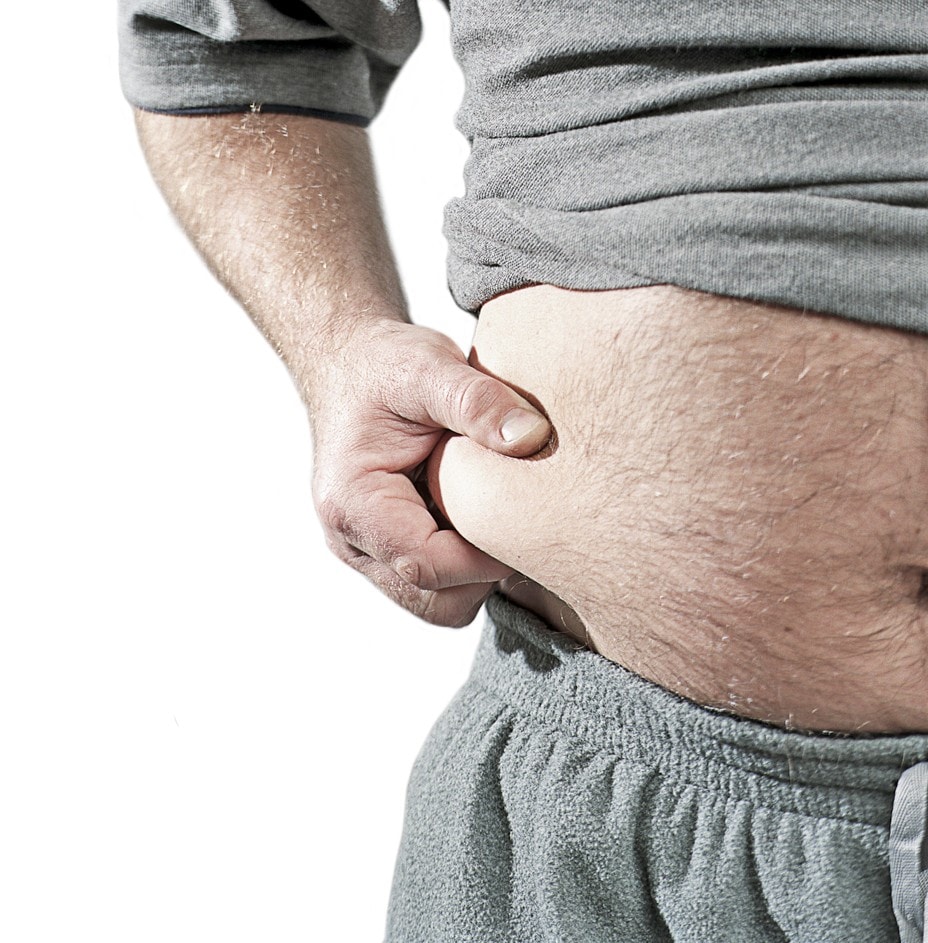Unexpected Fat Gain
The challenge for most is not just getting a lean physique but staying that way for a long period of time.
Dieting can become so stressful for some that a rebound in weight is almost always eminent once the target weight is met.
Many people are not aware that after reaching low body fat levels the body is particularly primed for fat storage, regardless how carefully you count calories or perform cardio each week.
Lowering caloric intake while in a calorie deficit causes the body’s metabolism to slow down with time, making it very easy to store fat calories by just eating at the maintenance level you had before starting the diet.
Without knowing how to adjust into a maintenance after dieting or cutting for a period of time, fat spillover will become inevitable and ruin months of hard work that went into your physique.
The error that many new bodybuilders make is bulking right after being at their leanest. This is especially true for those coming off of ‘peak week’ when the body is very water and carb deprived (see How to Get Photo Shoot Ready).
It’s important to make the proper transition from one phase to the next.
Reverse dieting is a plan to physiologically and psychologically maintain your weight. Instead of immediately getting back to the diet prior to losing weight, your calories are slowly reintroduced back into your meals to prevent rapid weight gain.
To do this calories would be added on a weekly basis by either calculating the extra grams of macronutrients or by slowly increasing the portion sizes at each meal.
While protein and fats mainly stay stationary, carbohydrates are manipulated each week to get the desired caloric intake level.
An example of this would be increasing the calories in the meal plan for week one 30-70 calories by adding slightly larger carbs portions or existing foods to meals. This would be done to maintain a weight gain of 1 lb or less per week.
Cardio is also modified by reducing time periods or interval frequencies during each week. For example, 5x a week of cardio would be reduced to four days or amount of HIIT cardio intervals performed at a session lowered each week for less intensity.
To gauge your progress on a reverse diet you should use both the weight scale and the mirror. This is important as monitoring progress solely based on your scale numbers every few days can clash with you psychologically and cause massive frustration.
As you make the adjustment to a higher caloric intake you can determine how well the dieting is going by observing blurriness in abdominal definition, muscle separation, water retention, etc.
The Wrap Up
Instead of rushing into a bulking diet after reaching low body fat levels, it would be wise to transition into a maintenance phase for a period of time. Your body needs time to acclimate to higher levels of metabolism to minimize fat gain and keep as much lean body mass as possible. With experience and time bodybuilders learn how make gradual steps towards physique development without errors that cause regression and lost time.



Leave a Reply
You must be logged in to post a comment.